ELECTIONS
Five days later, tensions rise as Kenyan presidential election results trickle in
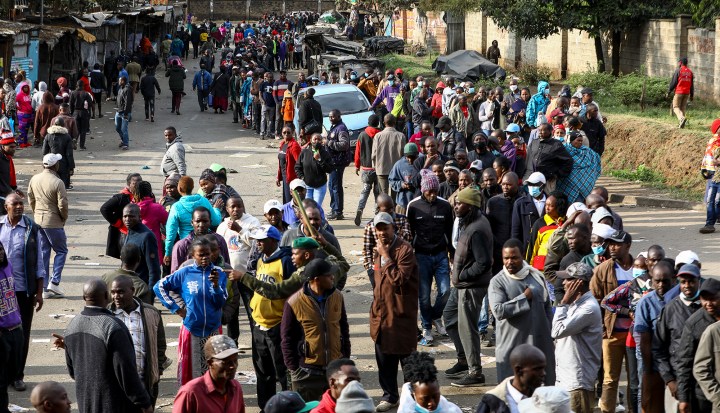
Five days after Kenya’s presidential election, no official result was yet in sight though preliminary calculations pointed to a major upset victory by vice president William Ruto over his favoured rival, former prime minister Raila Odinga.
Tensions were rising in Keyna between supporters of the two candidates as the Independent Electoral and Boundaries Commission (IEBC) painstakingly checked and double-checked results to avoid posting incorrect figures. The IEBC is clearly trying to avoid a repeat of the embarrassment of the previous elections in 2017 which the courts annulled, on the basis that the electoral body had not conducted them properly.
On Sunday afternoon, the official IEBC results showed Ruto pulling ahead with 52.46% (4,775,268 votes) to Odinga’s 46.87% (4,266,125 votes). But this was after only 7,102,854 votes had been counted from 180 constituencies, out of a total of more than 14.4 million votes in 291 constituencies.
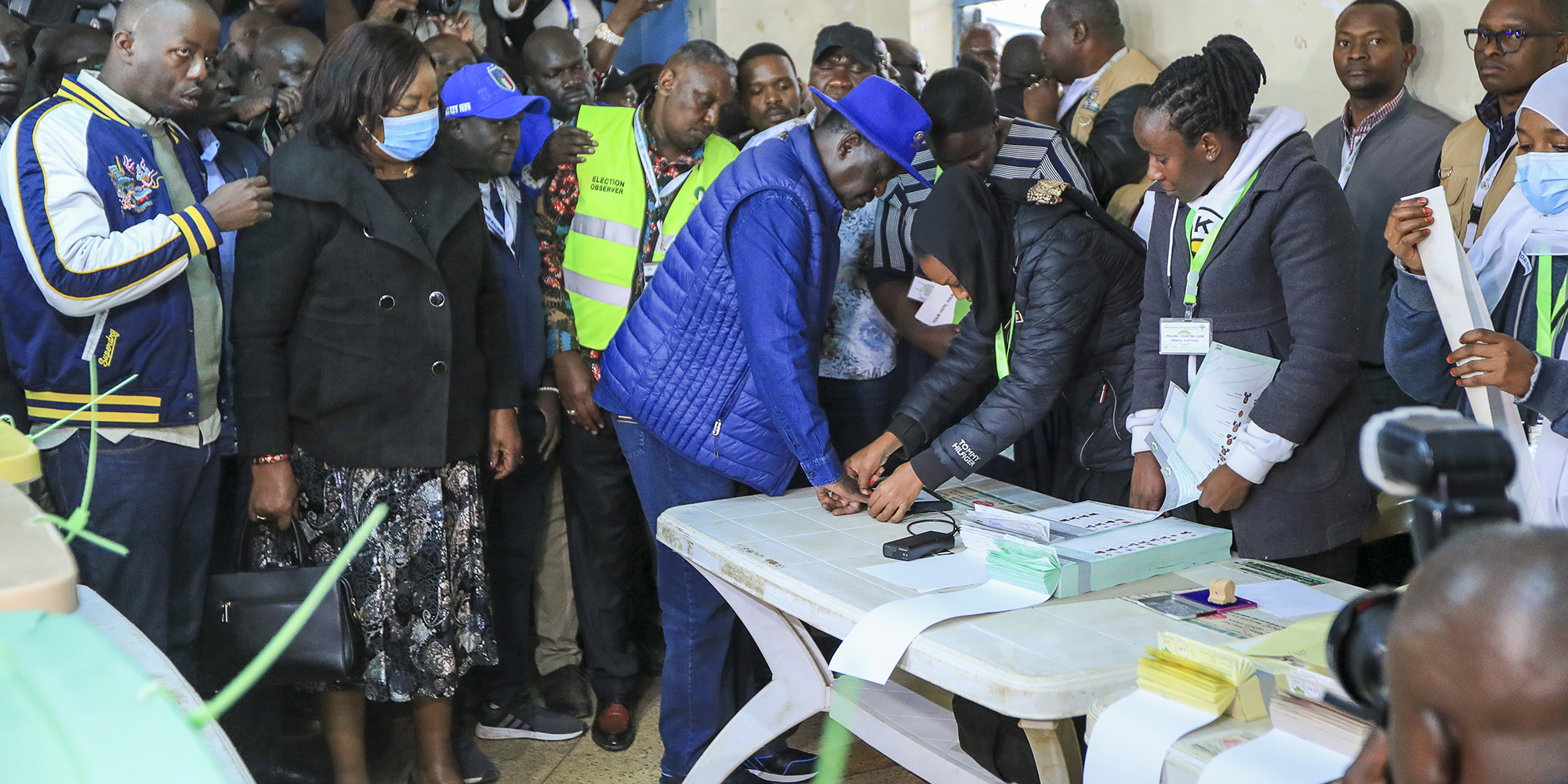
Kenya’s Azimio la Umoja (Declaration of Unity) political coalition presidential candidate and Kenya’s opposition leader Raila Odinga (centre), casts his ballot in Kibera, Nairobi, Kenya, on 9 August 2022. (Photo: EPA-EFE / Daniel Irungu)
Kenya’s The Standard newspaper, which has been tallying unverified votes from the 46,229 polling stations and constituencies, separately presented an even tighter contest, showing Ruto ahead with 50.63%, to Odinga’s 48.7%, after counting 13.2 million votes.
The BBC, using raw IEBC data, put Ruto ahead at 51% with 6,796,267 votes to Odinga’s 48.3%, with 6,430,667 votes. The BBC also estimated that Ruto’s Kenya Kwanza coalition was slightly ahead in the Senate election with 33 seats to the 32 of Odinga’s Azimio La Umoja coalition. In the National Assembly, it put Azimio ahead, with 124 seats, to Kenya Kwanza’s 123.
The estimates of the presidential outcome suggest Ruto could win in the first round. To avoid a run-off election, a presidential candidate must win more than half the votes cast — 50% plus one vote, plus at least 25% of the vote in at least 24 of the 47 constituencies. If neither Ruto nor Odinga reaches those totals, the run-off election would likely be held in September.
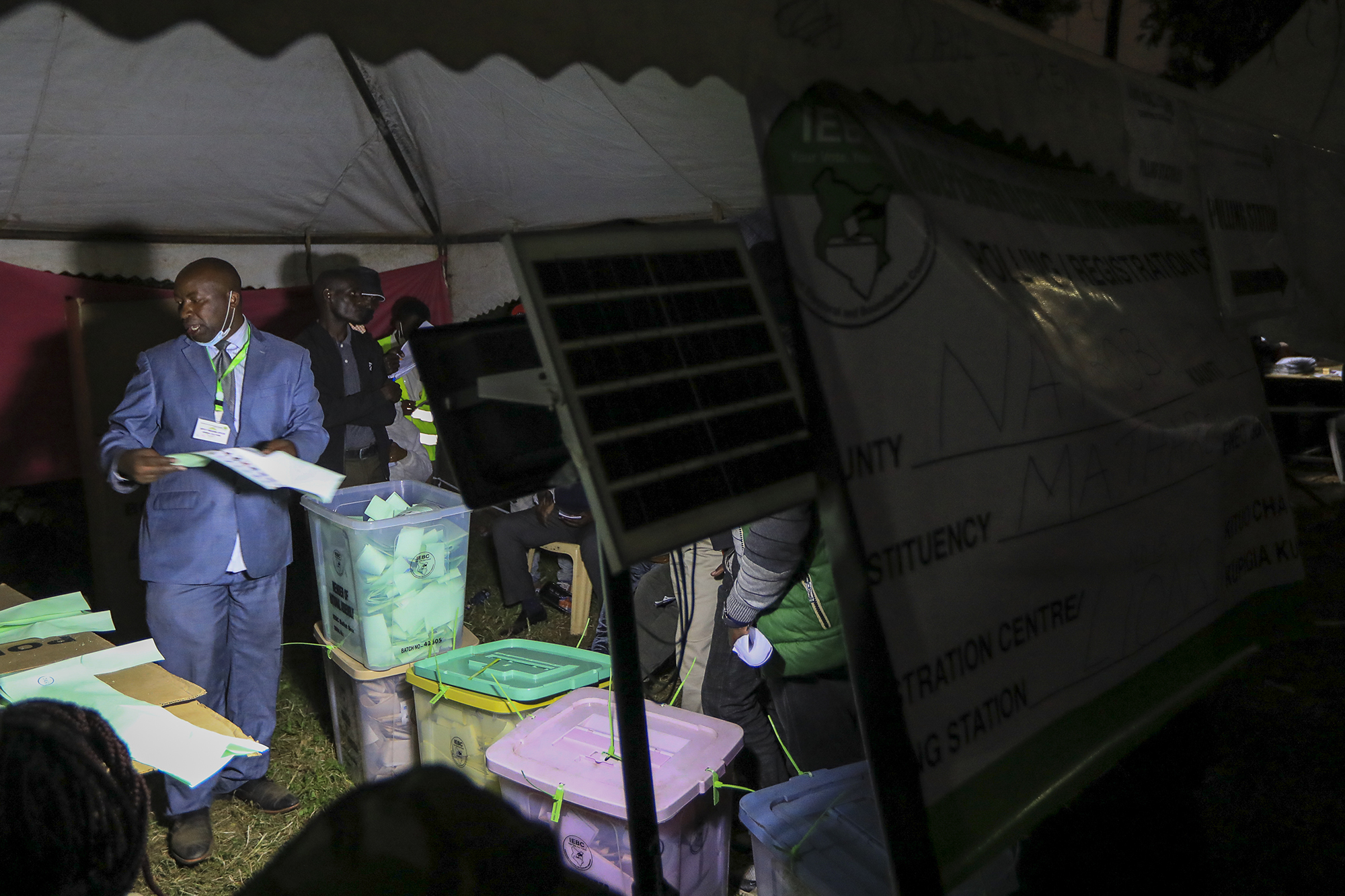
Candidates’ agents and Independent Electoral and Boundaries Commission officials count cast ballots at a polling station in Huruma, Nairobi, Kenya on 9 August 2022. (Photo: EPA-EFE / Daniel Irungu)
But it is almost certain that if the IEBC declares Ruto the winner in the first round, Odinga will contest the result in court. The general concern is that his supporters might take to the streets to protest, possibly provoking violence.
2017 debacle
The main reason for the delay in counting has been that after the debacle of 2017 when the electronic transmission of results from polling stations to the national counting centre failed, the courts ordered a backup system. So it was decided that this time the paper forms certifying the results from each of the 46,229 polling stations and the 291 constituencies had to be physically transported to the national counting centre in Nairobi to be reconciled with the electronic results.
On Friday, IEBC chairperson Wafula Chebukati castigated political party agents for taking too long over this reconciliation process, telling them to stop being “forensic auditors”. But Kenya expert Nic Cheeseman, professor of democracy at the University of Birmingham, tweeted that the IEBC should be given until its deadline on Tuesday — one week after the elections — to do its job properly.
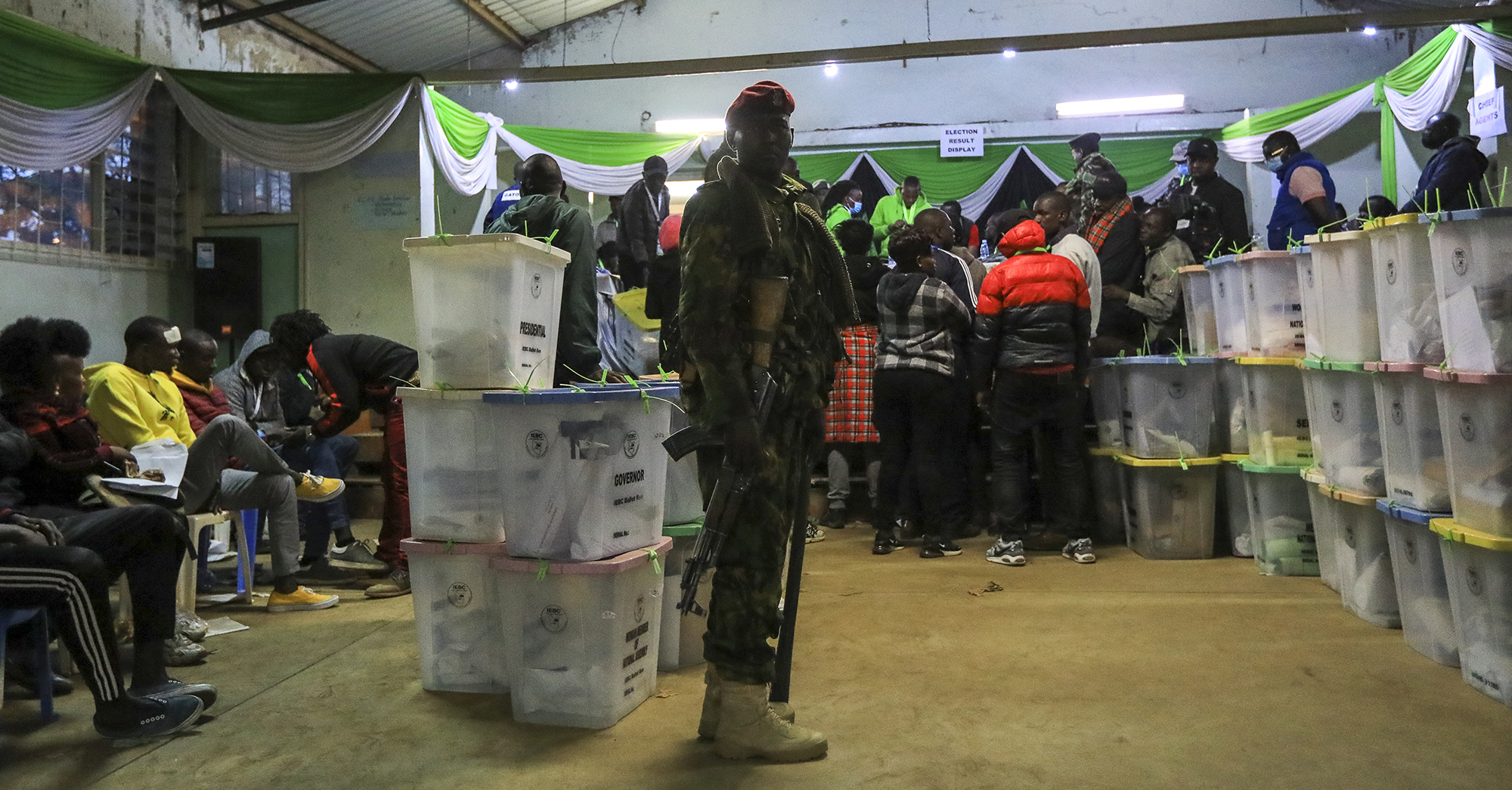
Kenyan General Service Unit (GSU), police officers stand guard at St Theresa Girls’ Secondary School tallying centre in Mathare, Nairobi, on 11 August to keep order after a commotion followed allegations of vote tampering, two days after Kenyans cast their ballots in the general election. (Photo: EPA-EFE / Daniel Irungu)
Cheeseman said judging by the claims of parties and votes already counted by the media it was likely the margins could be as narrow as 80,000 votes between the winning candidate’s vote and the 50% + 1 vote needed for a first-round victory. The margin between Ruto and Odinga’s votes could be about 250,000.
Two implications
“If it is this close, it has two implications; 1) it makes the job of IEBC Kenya much harder as even fairly small issues can impact the outcome. And 2) it will encourage parties to be more intransigent and less likely to accept defeat.
“Given all of this, it may make sense for the IEBC to take the time they have — till Tuesday — to address every concern they can… before announcing the result.”
All participants and observers in this election fear what happened after the 2007 election between Uhuru Kenyatta and Odinga which degenerated into inter-communal violence — in which about 1,100 Kenyans died — after the electoral commission declared Kenyatta the victor and Odinga’s supporters cried foul. They are crying foul again now about the provisional results, though neither Cheeseman nor any other objective observer has seen any sign of it.
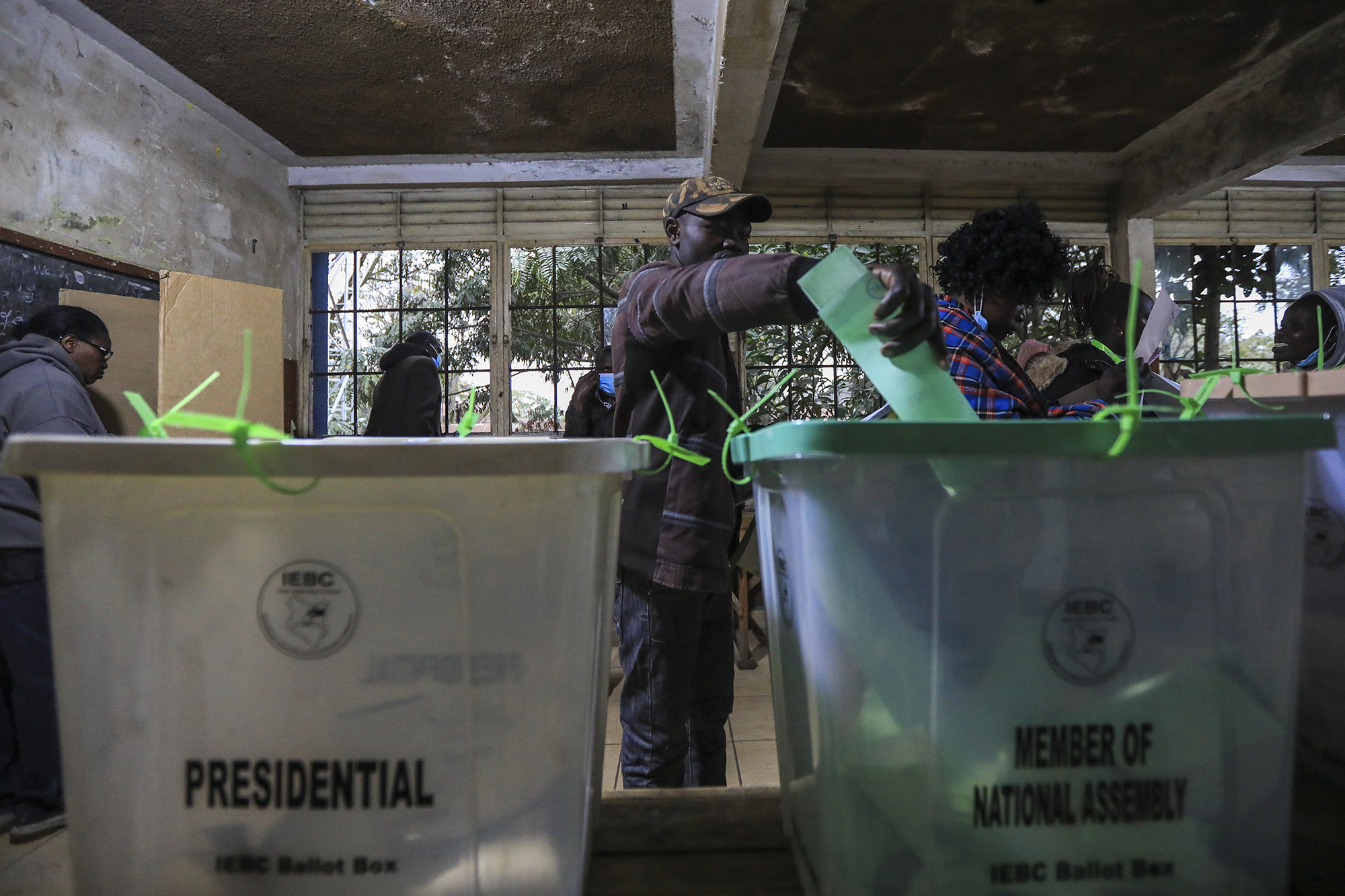
A voter casts his ballot during the general elections at a polling station in Huruma, Nairobi, Kenya, on 9 August 2022. (Photo: EPA-EFE / Daniel Irungu)
Odinga’s supporters feel even more certain they’ve been cheated because almost all polls before last Tuesday’s election had put Odinga ahead, possibly with enough votes to avoid a run-off. This was the 77-year-old’s fifth and possibly last shot at the presidency. He lost in 1997, 2007, 2013 and 2017.
This time, he formed an alliance with President Uhuru Kenyatta, his bitter rival from the 2013 and 2017 elections and this boost from the incumbent president — who had fallen out with his vice president Ruto — seemed to give Odinga his best chance so far.
Ruto, ‘youth champion’
But the unconfirmed results suggest that Ruto, 55, has succeeded in presenting himself as the champion of Kenya’s largely disaffected youth who are disproportionately suffering the impact of a stagnant economy.
Ruto campaigned on the promise that he would represent the interest of “hustlers” against the “dynasties” — the latter a reference to the fact that both Odinga and Kenyatta are the privileged sons of old political families. Uhuru’s father Jomo Kenyatta was independent Kenya’s first president and Odinga’s father Oginga Odinga was his vice-president — before they fell out in 1966, soon after independence in 1963.
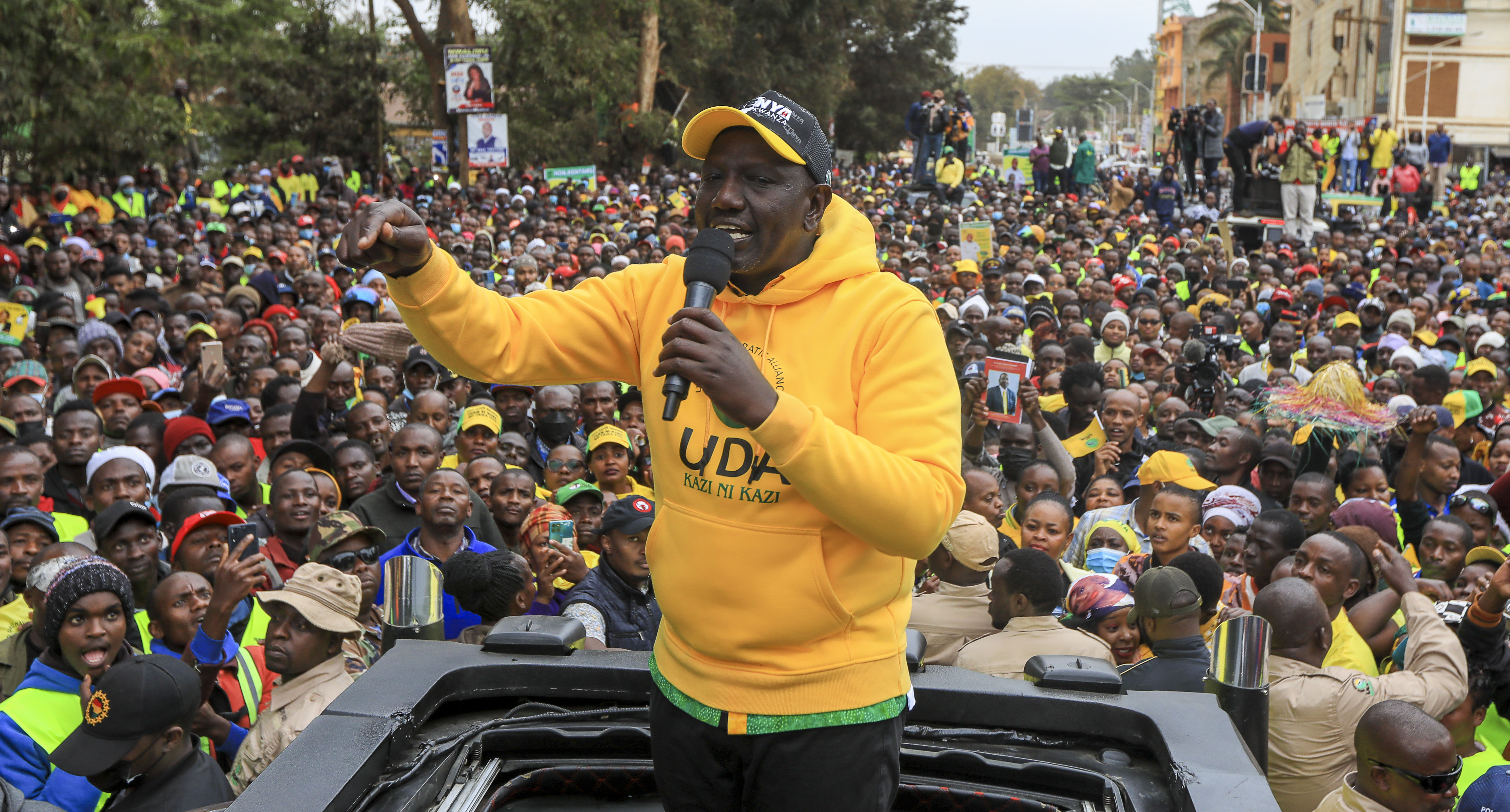
Kenya’s Deputy President and the Kenya Kwanza Coalition presidential candidate William Ruto addresses a crowd of supporters at a political rally at Thika town, in Kiambu, Kenya, on 3 August 2022. (Photo: EPA-EFE / Daniel Irungu)
Most election observers were cautious in their assessments of Tuesday’s elections, no doubt also because some had been burnt in 2017 when they were seen as going too easy on the IEBC — and then being shown up by Kenya’s courts.
Nonetheless, they largely said the polls had been conducted peacefully and did not report seeing any evidence of rigging or errors large enough to influence the outcome. More than 22 million voters were registered to choose the national president, the Senate, the National Assembly, 47 county governors, 47 country assemblies and 47 women country representatives.
Peaceful poll
The African Union/Common Market of East and Southern Africa (Comesa) observation mission, led by former Sierra Leone President Ernest Bai Koroma, said the “elections were conducted in a comparatively peaceful environment” and that improvements in the process had increased transparency. It commended Kenyans “for their efforts toward holding successful elections and deepening democratic rule, which is a prerequisite for sustainable socioeconomic development in the country.”
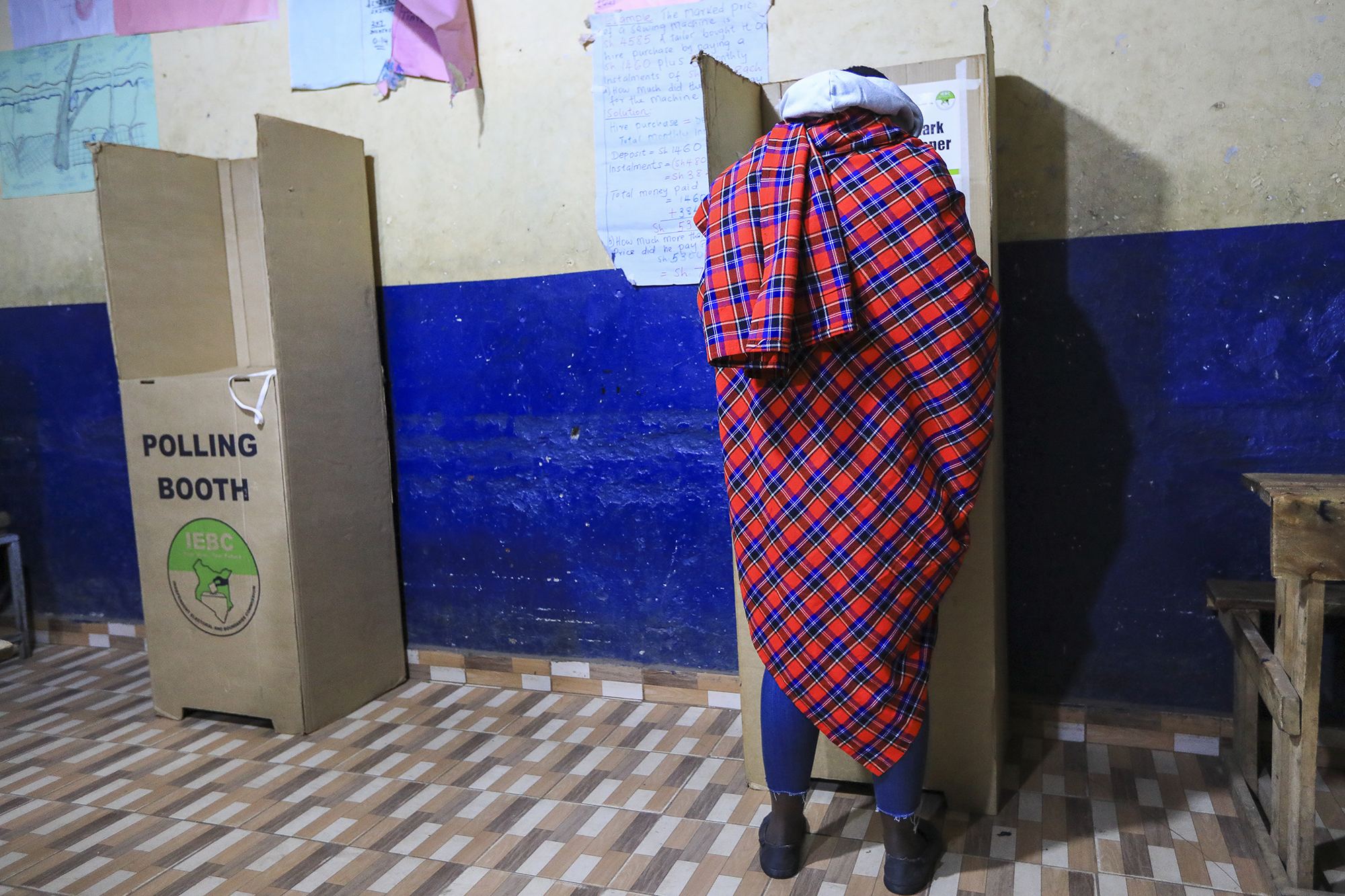
A voter uses a polling booth to mark her ballot papers at a polling station in Huruma, Nairobi, Kenya, 9 August 2022. (Photo: EPA-EFE / Daniel Irungu)
The European Union election observation mission led by Ivan Štefanec, a Slovakian member of the EU Parliament, said Kenyans had “cast their votes patiently” and that their “fundamental rights were generally respected throughout the course of the campaign.”
“The lead-up to the elections was characterised by significantly less tension and conflict than in the past.” However, the EU mission did observe many technical flaws in the voting on 9 August and particularly noted the problems caused by last-minute changes to the election process — a reference to the courts ruling the day before voting that manual voters rolls could not be used to identify voters as a backup to the KIEMS electronic voter identification system which was based on fingerprints and alpha-numeric data.
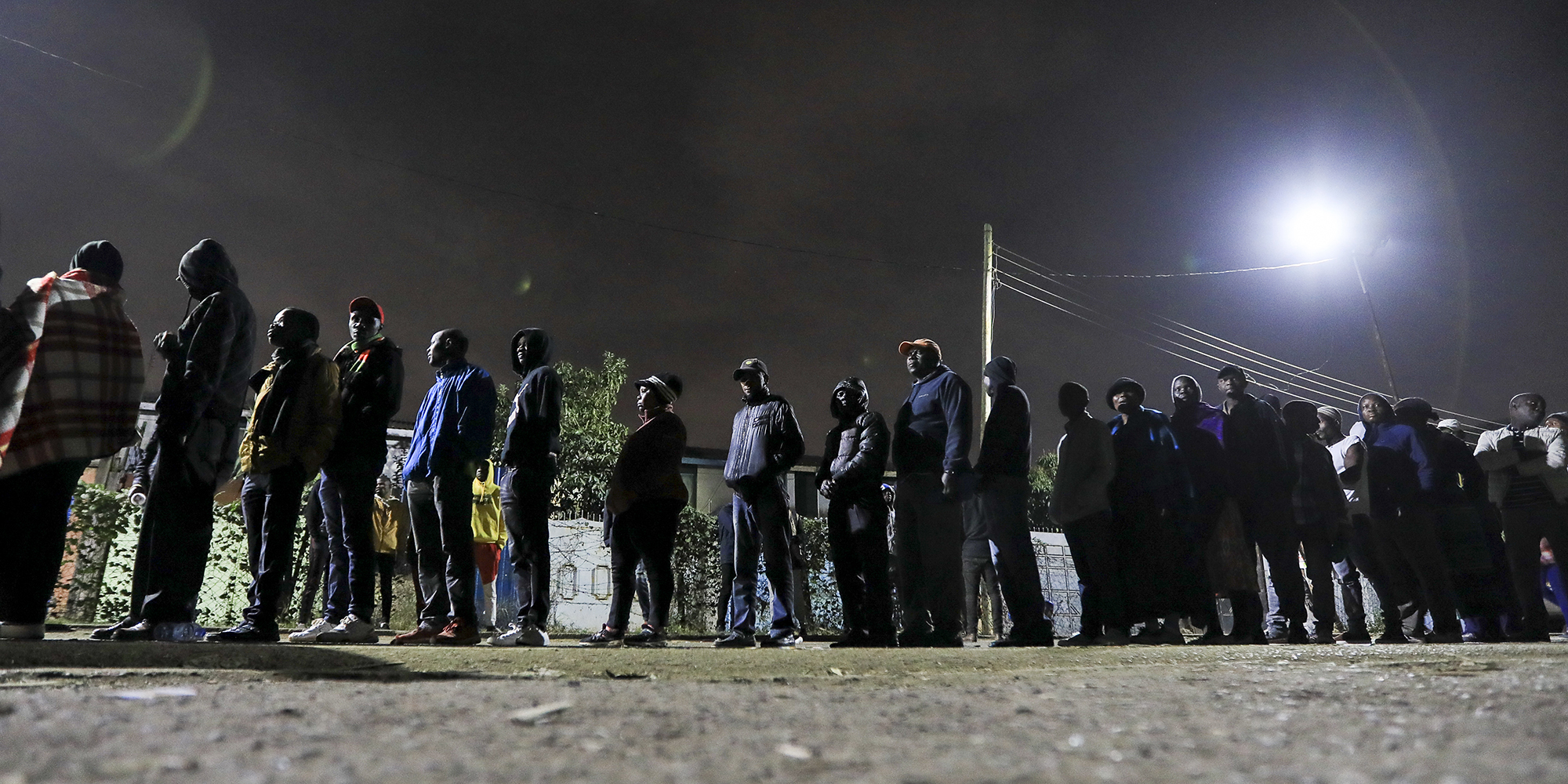
Voters queue before polling stations open in Huruma, Nairobi, Kenya, on 9 August 2022. (Photo: EPA-EFE / Daniel Irungu)
South Africa’s election observation mission, led by former Ethiopian Prime Minister Hailemariam Desalegn, concluded that despite several flaws, the KIEMS system had largely done its job as voters whose fingerprints had been rejected by KIEMS had been verified instead by their identity document information and photographs, and so allowed to vote.
“Overall… voting day was generally peaceful and orderly,” it said. “While there were some technical and logistical problems, these were neither sufficiently widespread or systematic to undermine the integrity of the voting process.”
All the observer missions stressed that their preliminary reports covered only election day and that it was too soon to judge the integrity of the critical transmission and counting of votes. DM
Peter Fabricius was in Kenya as part of the Brenthurst Foundation election observation mission.


















 Become an Insider
Become an Insider
Comments - Please login in order to comment.